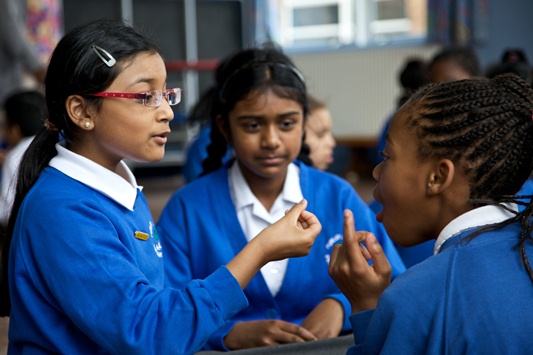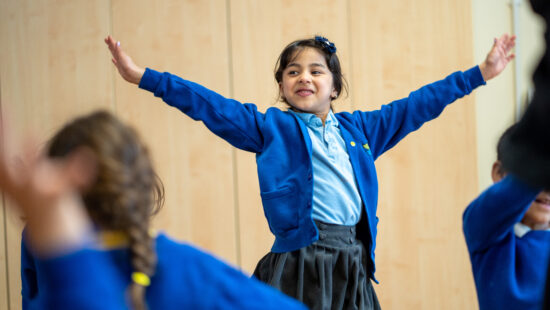Creative ways for teachers to teach poetry

Creative ways for teachers to teach poetry
This National Poetry Day, we are celebrating by giving you some creative ideas and approaches for teaching poetry through music, drama and movement. So whether it’s Michael Rosen, Shakespeare, Carol Ann Duffy or Dr Seuss – these ideas can be adapted to suit them all…
Acrostic Rapping: We’re all familiar with acrostic poems, but this approach can give the formula a new lease of life. Give the children the extra challenge of making each line of their poem scan rhythmically, turning it into a rap. This can be done as a whole class, or, if the children are more able, in small groups. Put a backing track on and away you go! A nice additional touch is to have the children say the letter name before rapping the line, which will also help them remember the spelling.
Appreciating Poetry through drama:
KS1
Little Miss Muffet, Andrea Shavick
Neil Armstrong, by John Foster
- Read aloud the poem Little Miss Muffet, and then model performing this poem. Briefly, ask children to carry out an individual performance of this poem as you recite it again (they can perform independently or along with you, as appropriate).
- Organise the children into small groups. Ask them to read the poem, Neil Armstrong aloud in their group. Tell the children that these poems are known as clerihews (a four line comic verse comprised of two rhyming couplets). The lines can be of any length, but the first line contains the name of the person the poem is about.
- Explain to the children that they will prepare a performance of Neil Armstrong. Encourage them to think about the following:
- movement
- facial expression
- gesture
- vocal techniques
- Children perform their poems. Compare similarities and differences between groups’ performances.
KS2
Mushrooms, Sylvia Plath
Omitting the title, read the poem aloud while the children listen.
Make sure the title is hidden; provide the children with a copy of the poem to follow as you read it again. They can see the line breaks, verses and how it looks on the page.
Read the poem a third time, inviting the children to follow their copy as you read. Can they suggest what it might be about? What clues are there? What words interest them / sound unusual?
Reveal the title, Mushrooms. You may decide to show images of mushrooms. Now they know the title, ask the children to imagine pictures in their mind’s eye as you read the poem again.

Say it with Dance:
Hickory Dickory Dock
Whilst standing, curl up very small, tuck in your knees and elbows, noses, as small as a mouse. Stay on your feet and see if you can travel in that small shape.
Listen to Hickory Dickory Dock. Can you start with just your nose twitching as you hear the tick, tock of the clock (percussion/vocal sound), now as I say the poem ‘Mice’ can you get higher, but keep your small mouse shape.
When the clock strikes one, how does the mouse feel? (shocked/surprised), show me that and I’ll find a surprising clock sound, then go all the way back down into your small shape near the floor. Repeat several times, discussing the mouse’s feelings. (the clock struck 2, the mouse went boo, 3, the mouse went “weeee”, 4, the mouse said “no more!”)
Perform in two groups. Group 1 says/sings the poem, the other group is the mouse.

